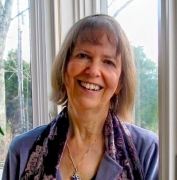
Bobbie Ann Mason, 1983 PEN/Hemingway Award Winner for Shiloh and Other Stories
Q: What was it like growing up in rural Kentucky? Did growing up there affect you as a writer?
A: It was a small, isolated dairy farm. Although it was close to town, I had to ride the school bus to the distant country school. My rural background had everything to do with my becoming a writer. First, I wanted to escape the confines of country life and seek an education. Then, looking back, I discovered that my real sources of material and my sensibility derived from the very world I had left. I had to leave in order to get that perspective. I see now that one of the most valuable parts of my education was the intimate knowledge of nature—plants, fields, cows, bugs, dogs, mud, etc.—that I gained in early life on the farm.
Q: Do you consider yourself a Southern writer?
A: Geographically, yes, but I don’t think the term has much meaning anymore. I was more drawn to Nabokov and Hemingway than I was to Faulkner. And rural roots are universal. The culture and history of the South have inspired a wealth of literature, art, and music, but now the place has changed in so many ways that an artist or writer need not feel trapped by tradition.
Q: I read that you were influenced by Ernest Hemingway at an early age. What drew you to Hemingway’s prose?
A: I minored in journalism in college and wrote a column for the school paper, so Hemingway’s journalistic style certainly appealed to me. The first novel of his that I read was For Whom the Bell Tolls. My freshman English teacher assigned us to write a paper about what we would do if we knew we had only three days to live, as Robert Jordan did in the novel. I made a lot of grandiose plans for my three days!
Q: Do you have a favorite Ernest Hemingway book or story?
A: A Farewell to Armsis my favorite, emotionally, but The Sun Also Rises, stylistically.
Q: You hold a Ph.D in English Literature from the University of Connecticut. Did you believe, at that time, that you would have a career in academia first, or did you always believe you would become a full-time writer?
A: Honestly, I had no idea of where any of it was going. The possibilities were so limited then. I had no confidence that there would be any kind of career, academic or literary. I just wanted to stay in school and not have to put out to crop, or work in a factory or a store. In the early sixties, women couldn’t count on anything.
Q: War is a theme in many of your creations (In Country, “Shiloh,” The Girl in the Blue Beret). Can you expand on why writing about war is important to you as a writer?
A: I didn’t begin with an aim or an urgency to write about war. I went where the stories led me. “Shiloh” seemed to be an accidental creation. And the Vietnam War reared its head many months into exploring the story of In Country. Vets were starting to tell their stories and the Memorial in Washington was coming into being. I think the subject was in the air in a new way. Later, World War II was surfacing in the popular consciousness as all those D-Day anniversaries began coming. I was inspired by a personal family story to write The Girl in the Blue Beret. So, the imagination is hardly deliberate; it scoops up the stray bits that are in the air and starts weaving them together.
Q: Do you remember where you were when you received the news that you won the PEN/Hemingway Award in 1983?
A: I was at my desk in Emmaus, Pennsylvania, during the time that I began writing InCountry.
Q: What are you working on now, and how can your readers learn about any book tours or new releases?
A: I am writing a novel now, which I hope is nearly finished.
And my most recent book is a reader, a ragbag of selections from my works called Patchwork, withan introduction by George Saunders. It is published by the University Press of Kentucky.
My website is bobbieannmason.net.